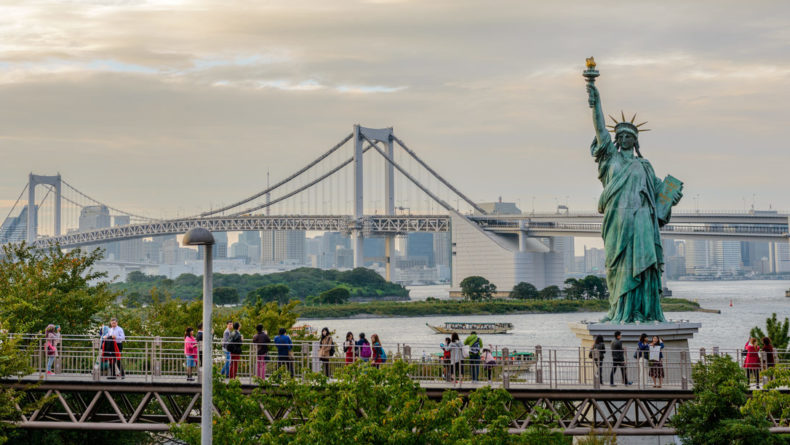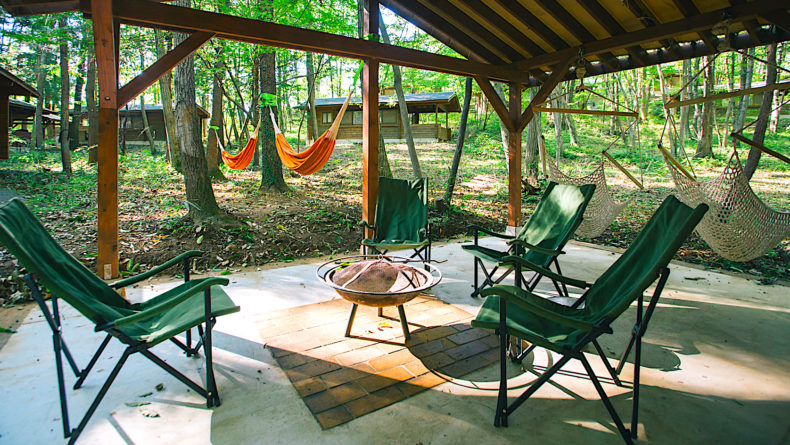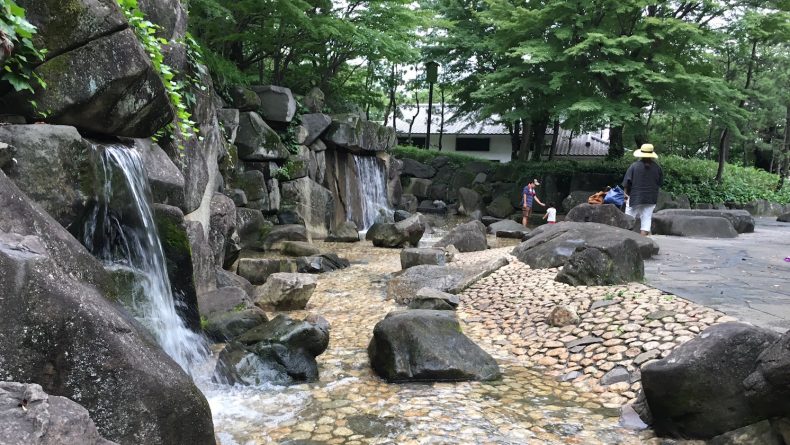5 Beautiful Tokyo Gardens To Visit This Summer
Take An Idyllic Stroll Through Some Of The City's Best Urban Sanctuaries
From tranquil Edo designs to Chinese-inspired garden strolls, here are five green gems to get you into the great outdoors this summer.
With the warmer weather comes the perfect opportunity to explore some of the city’s most beautiful and timeless outdoor spots, full of shady nooks, stunning flowers, scenic bridges and some brilliant facilities. Hotbeds of history, these gardens merge design with Japanese philosophical and aesthetic ideals — and prove a great way to learn more about Japanese culture while enjoying the view.
Typical to Tokyo are the traditional Edo-period stroll gardens, designed to takes visitors on a circular route, whilst borrowing scenery from outside the garden — such as temples or mountains. Another key feature is the “hide-and-reveal” technique, which allows scenes to unfold as visitors reach certain viewpoints. Serene yet simple, we’ve picked some of the best to explore across the city.
1. Rikugi-en
Hidden from passersby by a high brick wall, the scale of Rikugi-en takes you by surprise. Visitors are greeted by a colossal weeping cheery before being confronted with the stunning vista of the koi carp-filled lake and sprawling pathways leading visitors around its shoreline. Founded by literary scholar Yanagisawa Yoshiyasu in the early 18th century, “Rikugi-en” means “garden of the six principles of poetry” and was originally home to 88 miniature views taken from the Japanese landscape. While only a few of these scenes remain, its meticulous construction has resulted in a gorgeous, serene space. It’s not a spot for picnics or ball games — a horticultural enthusiasts delight — June is the perfect time to see its blossoming blue hydrangeas and pink azaleas.
The formal aspects of Rikugi-en are not the whole story. The wilder areas around the garden’s perimeter — where stepping stones lead to shadier, tree-lined pathways — are fun to explore. Embrace the idyll and sip a cup of green tea at the charming Fukiage-chaya tea-house overlooking the lake or grab a bench in a secluded spot to watch the world go by.
Where: 6-16-3 Honkomagome, Bunkyo-ku, Tokyo. 10-minute walk from Komagome station.
Open: 9 a.m.-5 p.m.
How much: ¥300. Free entrance on May 4 and October 1.
2. Koishikawa Korakuen
Nestled among the baseball diamonds surrounding Tokyo Dome, Koishikawa Korakuen offers a moment’s peace from its otherwise hectic surroundings. Slightly smaller than Rikugi-en, it shares many of its stroll-around-the-garden features. It, too, has a lake as its centerpiece, as well as some stunning flower displays (its purple irises are particularly pretty), but what differentiates this garden from others are its roots in Chinese culture. Its design was overseen in the early seventeenth century by Ming dynasty refugee and scholar Zhu Shun Shui, which explains its mingling of Japanese and Chinese features and most memorably, its romantic Full Moon Bridge. Along with the rice paddies, the pretty waterways and the lashings of mosquito repellent provided at the ticket office, it’s a lovely, peaceful getaway right in the heart of the city.
Where: 1-6-6 Koraku, Bunkyo-ku, Tokyo. 3-minute walk from Iidabashi station or 8-minute walk from Korakuen station.
Open: 9 a.m.-5 p.m.
How much: ¥300. Free entrance on May 4 and October 1.
3. The Garden at the Nezu Museum
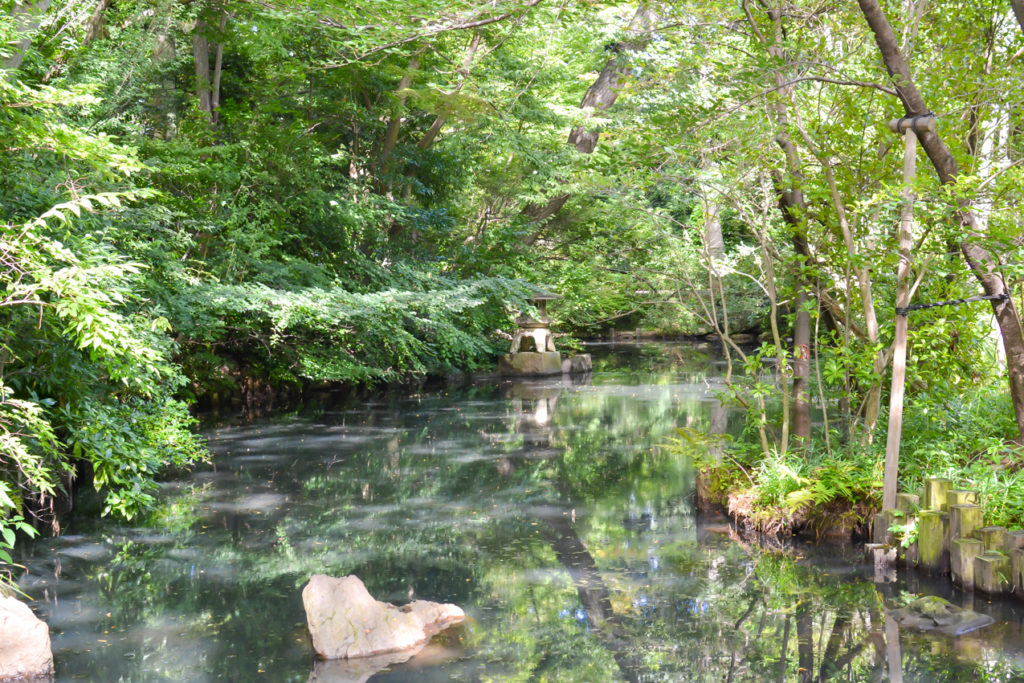
A true urban oasis, this stunning garden is a highlight of any trip to the Nezu museum. Located in the stylish hub of Omotesando, the museum was formerly the private residence to Nezu Kaichiro and now houses his collection of Asian and Japanese art. Winding walkways, stone lanterns, paving stones and a bamboo grove all provide different viewpoints to explore around the hilly garden, filled with stone sculptures and a number of preserved tea houses. Perhaps most interesting is the beautiful juxtaposition between the garden’s vivid greens and classical features, with the museum’s modern glass architecture. The café, serving lunch and cakes, is a great place to enjoy the garden from as well.
Where: 6-5-1 Minami-Aoyama, Minato-ku. 8-minute walk from Omotesando station, exit A5.
Open: 10 a.m.-5 p.m. Closed Mondays. If Monday is a national holiday, the museum is open on that Monday and is closed on the following Tuesday.
How much: ¥1,100 (includes museum entry)
4. Kiyosumi Teien
Originally the residence of an Edo-era merchant, the gorgeous Kiyosumi Teien is has lots of features that make it an ideal spot for children. Its character comes from the many isowatari, or stepping stones, which cross parts of the lake, allowing visitors to pick their way through the turtle- and carp-filled waters, discovering the small inlets that surround the lake’s shores. Landscape stones were symbols of prestige and power, and the garden was once renowned for its impressive collection. Be sure to visit the Ryotei, a traditional Japanese restaurant that seems to float on the lake itself (don’t forget to make a reservation) or linger over the many types of trees — there are over 4,000 here — particularly Japanese black pine.
Where: 3-3-10, Kiyosumi, Koto-ku, Tokyo. 3-minute walk from Kiyosumi Shirakawa station.
Open: 9 a.m.-5 p.m.
How much: ¥150. Free entrance on May 4 and October 1.
5. Shinjuku Gyoen National Garden
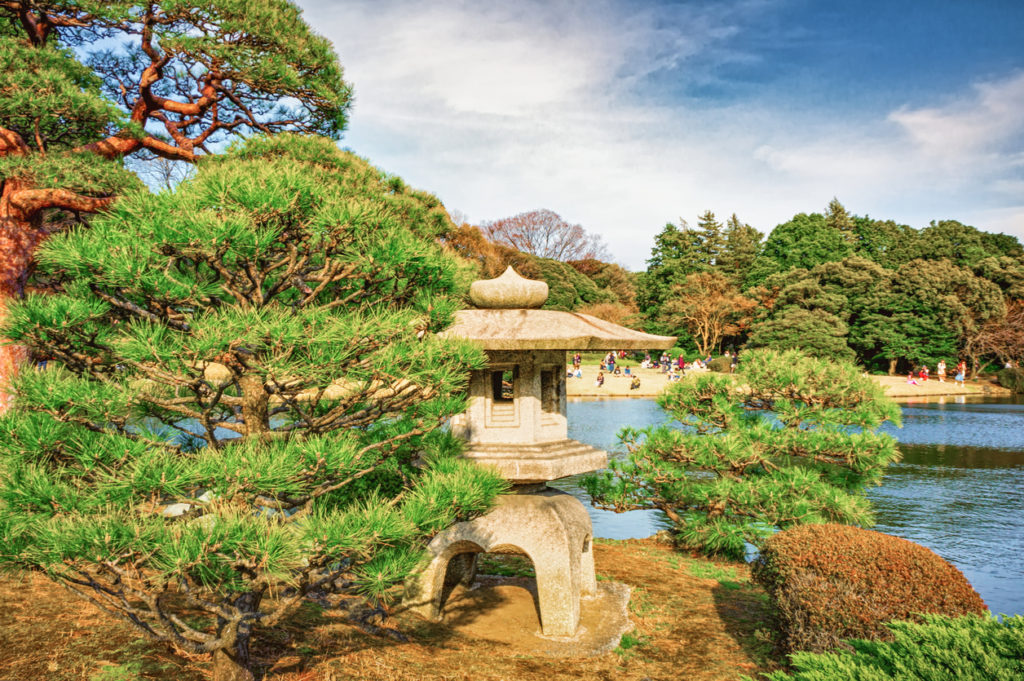
Most of us tend to think of Shinjuku Gyoen as a vast park, but it’s in fact a garden — as its operators will persistently correct you. Sprawling across central Tokyo, this picturesque garden is one of the city’s most popular destinations for hanami and autumn leaf picnics alike. Yet despite its popularity, it’s still a welcome escape from the urban chaos unfolding beyond its borders.
Shinjuku Gyoen was once a private residence and a botanical garden, before being completely destroyed during World War II. Reopening to the public in 1949, it certainly proves good value for money: as well as a traditional Japanese park, complete with bridges, ponds and fountains, there’s also a formal French garden and an English landscape green space with wide, open lawns. Peruse its beautiful greenhouse full of tropical plants or check out its information center and art gallery. With its range of spaces to explore, a pretty tea-house and central location, Shinjuku Gyoen is the perfect place to spend a lazy Sunday exploring.
Where: 11 Naitomachi, Shinjuku-ku, Tokyo. 5-minute walk from Shinjuku-gyoenmae station.
Open: 9 a.m.-6:30p.m. Closed Mondays. If Monday is a national holiday, the museum is open on that Monday and is closed on the following Tuesday. Open all Mondays between March 25 and April 24, as well as November 1 through November 15.
How much: ¥500
What’s your favorite garden or park in Tokyo? Share with us in the comments!











